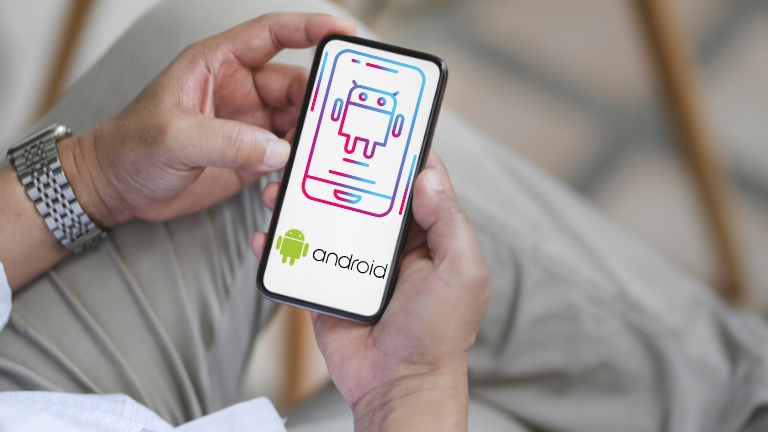For beginners in Android, facing new terms and concepts can be overwhelming. One such term is “Appstack.” Appstack is a relatively new technology that has emerged in the world of Android.
It is a different way of distributing and installing apps compared to the traditional method of downloading and installing apps from the Google Play Store or other app stores.
In this guide, we will explore what is appstack on android. how it works, and the benefits it provides to Android users.
What is Appstack?
Appstack is a technology that enables Android apps to be installed on a user’s device without the need to download and install the entire app.
Instead, Appstack downloads only the required parts of the app that are necessary to run it.
Appstack comprises two components: the Appstack server and the Appstack client. The server takes care of breaking down the app into smaller parts, while the client is responsible for downloading and installing these parts on the user’s device.
How Appstack Works
When an Android user intends to install an app via Appstack, the Appstack client verifies whether the app is available on the Appstack server.
If the app is present, the client downloads only the necessary parts of the app that are needed for it to function.
This implies that the user can begin using the app right away, without having to wait for the complete installation process.
As the user continues to interact with the app, Appstack downloads any additional components that are required to run it.
Benefits of Appstack on Android
Using Appstack on Android provides several benefits for both users and app developers.
Faster App Installations
Appstack provides faster app installations by downloading only the parts of the app that are required to run it.
This means that users can start using the app immediately, without having to wait for the entire app to download and install.
This can improve the user experience, particularly for users with slow internet connections or limited storage space on their devices.
Less Data Usage
Another benefit of using Appstack is that it can reduce the amount of storage space required on a user’s device.
Since Appstack downloads only the required parts of the app, it can take up less space on the device compared to a traditional app installation.
Additionally, Appstack can also benefit app developers by providing a more efficient way to distribute their apps.
Appstack can reduce the load on app servers and allow for faster app updates and deployments.
Overall, Appstack is a promising technology that can significantly improve the app installation process on Android devices for both users and developers.
Better User Experience
Appstack offers a more seamless user experience compared to traditional app installations.
As users can begin using the app immediately, without having to wait for the complete app to download and install, they are more likely to have a positive first impression of the app and continue using it.
Additionally, since Appstack downloads only the necessary parts of the app, it reduces the likelihood of errors and crashes during the installation process, leading to a smoother user experience.
Increased App Downloads
Appstack’s faster and more convenient installation process can lead to an increase in app downloads.
Additionally, since Appstack only downloads the parts of the app that are required to run it, users may be more willing to try out new apps, knowing that they won’t take up as much storage space on their device.
Lower App Uninstall Rates
Since Appstack provides a better user experience and faster installations, users are more likely to keep using an app and are less likely to uninstall it.
This can be beneficial for app developers as it can lead to increased user retention and better app ratings.
Appstack vs. Traditional App Installation
The traditional method of downloading and installing apps on Android involves visiting the Google Play Store or other app stores, locating the desired app, and then downloading and installing the entire app.
This process can be time-consuming, especially for larger apps. Users also need a stable internet connection to download and install the app.
However, with Appstack, users can start using the app immediately without having to wait for the entire app to download and install.
This makes the process of installing apps faster and more convenient for users.
Appstack and User Experience
Appstack indeed provides a more seamless user experience than traditional app installations, especially for large apps.
With Appstack, users can start using the app immediately, without having to wait for the entire app to download and install.
The additional parts of the app are downloaded and installed in the background, without interrupting the user’s experience.
This means that users are more likely to continue using the app which may lead to increased app usage.
Additionally, since Appstack uses fewer data than traditional app installations, users can save on data usage and may be more likely to download and use apps frequently.
Appstack and App Developers
Appstack can also be beneficial for app developers, as it can lead to increased app downloads and lower app uninstall rates.
This is because Appstack provides a faster and more convenient way of installing apps, making it more likely for users to download and continue using an app.
For app developers, this can translate to a larger user base and increased engagement with their app.
Additionally, since Appstack only downloads the parts of the app that are required to run it, app developers can save on server costs and reduce the amount of data used for app installations.
Appstack and App Monetization
Appstack may have an impact on app monetization strategies, as it only downloads the parts of the app that are necessary to run it.
This means that there may be fewer opportunities for app developers to display ads or encourage in-app purchases during the installation process.
However, the faster and more convenient installation process provided by Appstack can lead to increased app usage and user engagement over time, which can result in increased ad revenue and in-app purchases.
Overall, app developers need to consider the potential trade-offs between faster installations and traditional monetization strategies when using Appstack.
Challenges of Appstack
While Appstack has many benefits, there are also some challenges associated with this technology.
Fragmentation
One challenge of using Appstack is fragmentation, which refers to the breaking down of apps into smaller pieces.
This can make it more challenging for developers to manage and maintain the app, which can impact the user experience.
Additionally, fragmentation may lead to compatibility issues and difficulties in ensuring that all parts of the app work together seamlessly.
Compatibility Issues
Additionally, some apps may not be compatible with Appstack due to their unique requirements or dependencies.
This can limit the number of apps that can be distributed using Appstack and also make it more difficult for developers to utilize this technology.
Development Time and Costs
Developing apps that are compatible with Appstack can also be more time-consuming and expensive for developers.
Since Appstack requires developers to break down their apps into smaller pieces, this can take additional time and resources.
This can result in higher development costs and longer development times, which can be challenging for smaller development teams or independent developers.
Appstack and Security Concerns
One of the challenges with Appstack is security concerns. When an app is broken down into smaller pieces, it could create more opportunities for hackers to exploit vulnerabilities in the app.
Additionally, Appstack requires apps to be downloaded and installed from a central server, which could also be targeted by hackers, posing a potential security risk.
Developers need to ensure that their apps are secure and take necessary precautions to prevent any potential security breaches.
Appstack vs. App Bundles
Appstack and app bundles are two technologies that allow apps to be downloaded and installed in smaller pieces, providing faster and more convenient app installations for users.
However, there are some differences between these two technologies.
Appstack downloads and installs the additional parts of the app in the background, while app bundles require the user to manually download and install the additional parts of the app.
Additionally, Appstack requires developers to break down their apps into smaller pieces, while app bundles allow apps to be packaged together into a single file.
This can make app bundles easier to manage and maintain for developers.
Overall, both technologies have their advantages and disadvantages, and the choice between them will depend on the specific needs of the app and its developers.
Conclusion
Appstack is a recent innovation that can enhance the app installation experience on Android. With Appstack, users can start using an app instantly, without waiting for the entire app to download and install.
This feature can enhance user experience, encourage more downloads, and improve app usage over time. However, some challenges accompany this technology, such as fragmentation, compatibility issues, development time and cost, and security concerns.
Despite the challenges, Appstack is a promising technology that app developers can use to provide a better user experience for their users.









